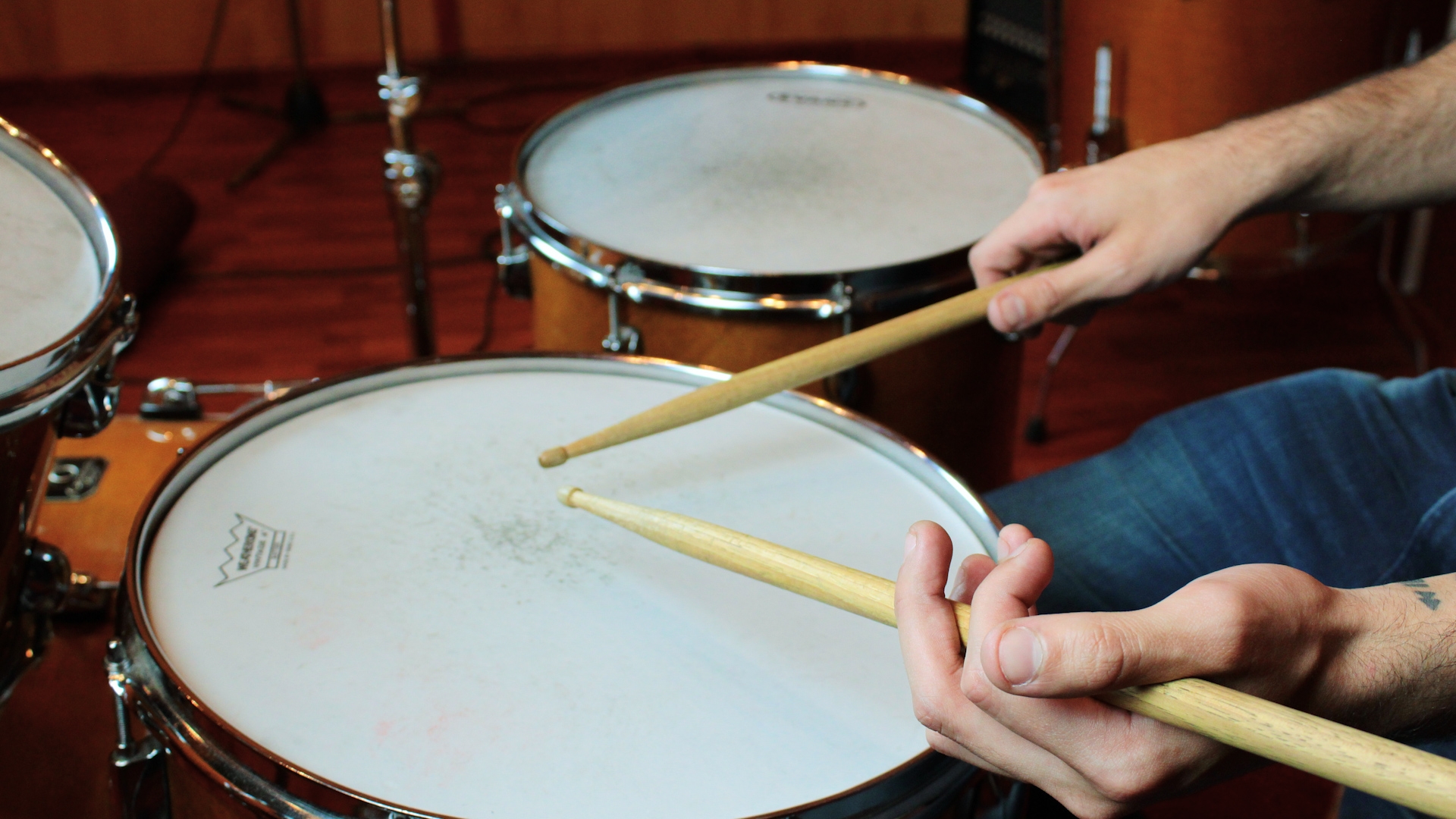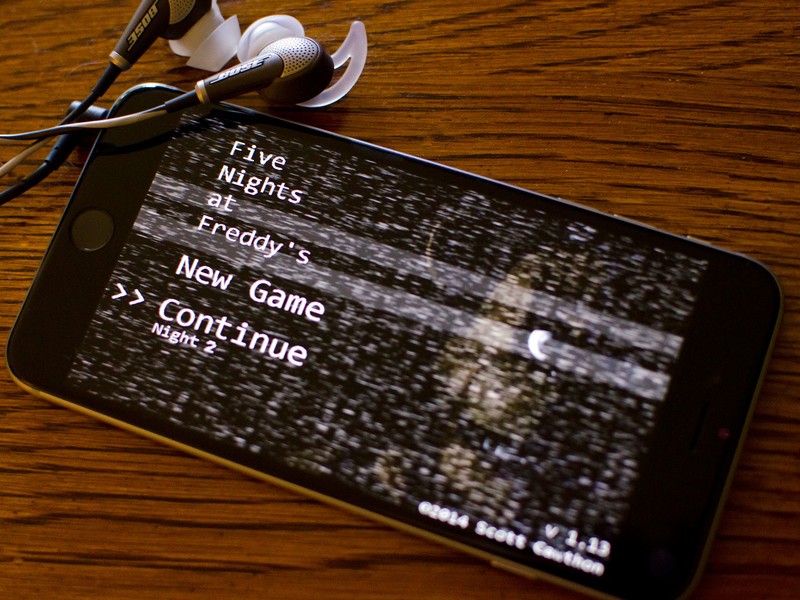20 Funniest Learning Games For Kindergarten Kids and How to Play
 Top 7 Richest Kids in the World in 2023 Top 7 Richest Kids in the World in 2023 |
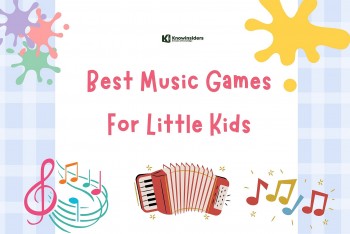 Top 20 Best & Popular Music Games For Little Kids Top 20 Best & Popular Music Games For Little Kids |
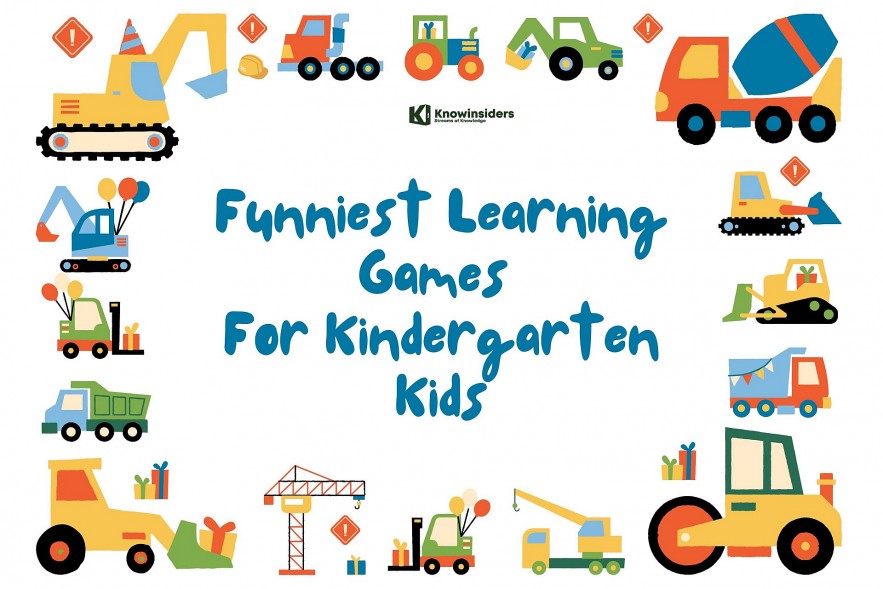 |
| Top 20 Funniest Learning Games For Kindergarten Kids. Photo: KnowInsiders.com |
| Contents |
Giving knowledge to children in the form of "playing" will help children quickly absorb knowledge and remember longer. So learning games for preschoolers are always great educational ways. In this article, KnowInsiders.com would like to introduce to you a list of the best and most interesting learning games for preschool children.
Top 20 Funniest Learning Games For Kindergarten Kids
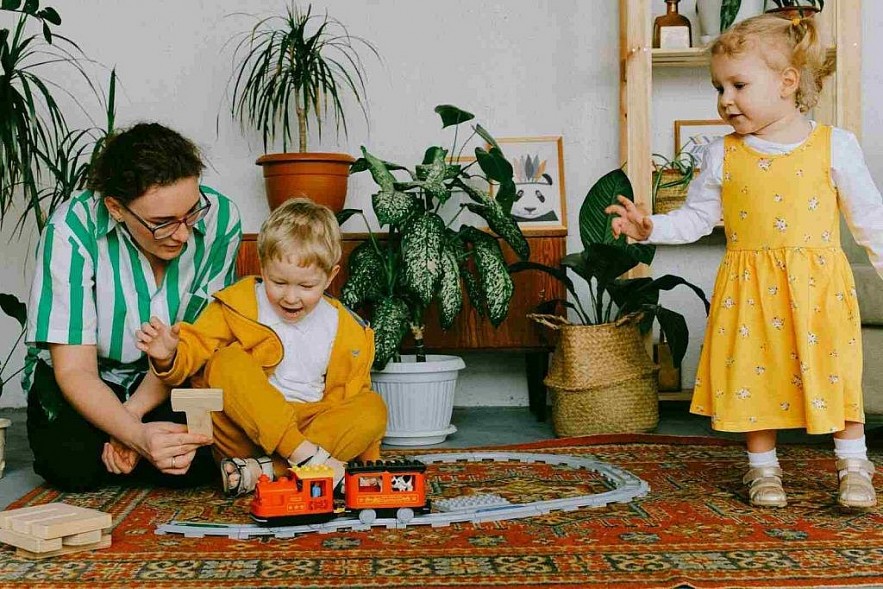 |
| Photo Pinterest |
1. Guess the Animal
What kids learn: Names of animals
Requires: Animal photo cutouts
How to play: Print out animal photos and paste them onto a cardboard sheet for this indoor game. Take out these animal cutouts and place them in your kindergarten classroom whenever you have free time to set up learning games. Then, one by one, have your students guess the animal from the photos.
READ MORE: 5 Best Educational Games for 6 Year old Kids
2. Collect Pink Balloons Only
Requires: Colorful balloons
How to play: This is a fun and educational game to play with kindergarteners. First and foremost, you must inflate various colorful balloons and scatter them throughout your classroom. After that, assign a color to each student and instruct them to collect balloons only in that color, such as pink.
What kids learn: Help your students identify different colors, and running around the class will tire them out.
READ MORE: 7 Best Educational Games for 7 Year-Old Kids
3. Simon Says, Draw!
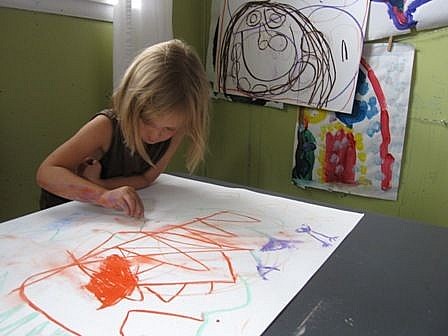 |
| Photo Pinterest |
Requires: Paper and crayons
How to play: Give each student a paper sheet and crayons. Then give them instructions to draw various objects, such as Simon's instruction to draw a circle. However, if you do not say "Simon says" before giving instruction and your students continue to draw, they will lose the game.
What kids learn: This will teach them how to listen and follow the instructions properly.
4. Blow Bubbles
Requires: Dish soap and straw
How to play: You can use blow bubble games to calm sensory-challenged students in your class. Dish soap should be dissolved on a plate, and students should be given a straw to blow bubbles with. To stimulate students' visual senses, add different colors to the bubble mixtures.
What kids learn: Improve their senses
5. Color Matching Activity
Requires: Colorful balloons
How to play: You can relax your sensory-disordered students by blowing up balloons with them. Following that, you can request that they find matching colored balloons. For example, you could hold a yellow balloon in your hand and ask students to find a balloon of the same color.
What kids learn: This indoor classroom game will help to improve visual senses.
6. Suck It Up
Requires: Straws and soft toys
How to play: This is the best indoor classroom game for kindergarten students to help them develop their oral senses. You can scatter small soft toys around your classroom and ask your students to pick them up with a straw.
What kids learn: This activity will help improve your students’ oral senses and muscular strength.
7. Shaving Cream Finger Painting
Requires: Shaving cream and watercolors
How to play: A shaving cream finger painting game can help your students improve their tactile senses. You can make different colored shaving creams and distribute them to your students. After that, you can let them paint by dipping their fingers into various colors.
What kids learn: This will help to improve their visual senses.
8. Salt Art
Requires: Loads of salt
How to play: Simply spread salt on a large plate and instruct your students to draw various letters, shapes, and numbers on it.
What kids learn: When students trace salt with their fingers and draw various things, it stimulates their feelings and allows them to better channel their senses.
9. Touch-and-Feel Boxes
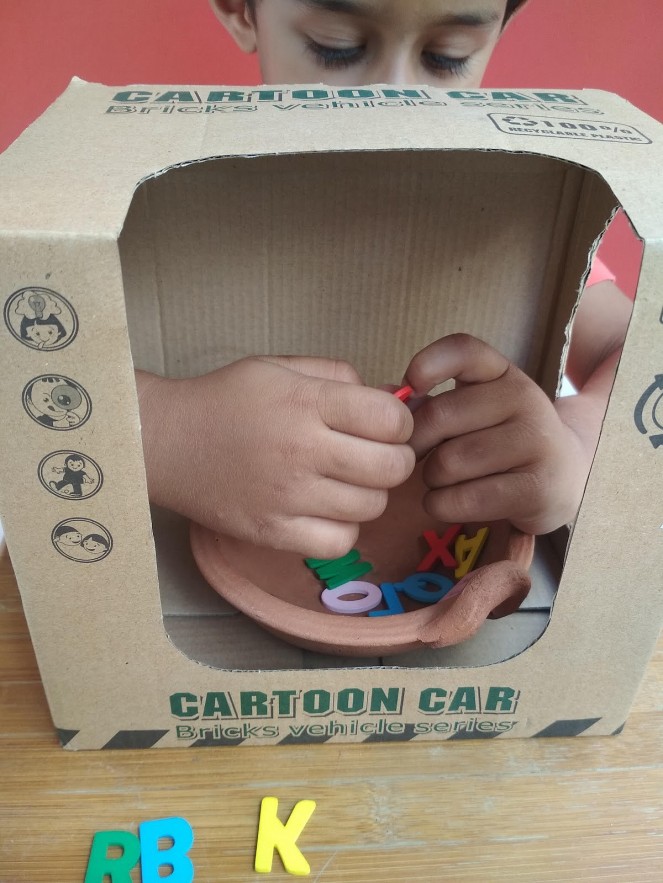 |
| Photo sonshine mumma |
Requires: Containers and objects
How to play: Begin by placing interesting objects in containers that require a child to reach into and identify by touch. Shoe boxes are ideal because they can be easily cut with scissors and do not allow light to pass through. Making the boxes is part of the fun; have the kids decorate them before cutting out a child-sized hand hole on the side of the box. Place an item in each box and have your children guess what they are. Encourage questions and provide hints as needed.
What kids learn: This is a great indoor game for kids to get them to focus on the sense of touch in a world so focused on the sense of sight. Train their minds to associate information other than just how the object looks.
10. Sorting beans
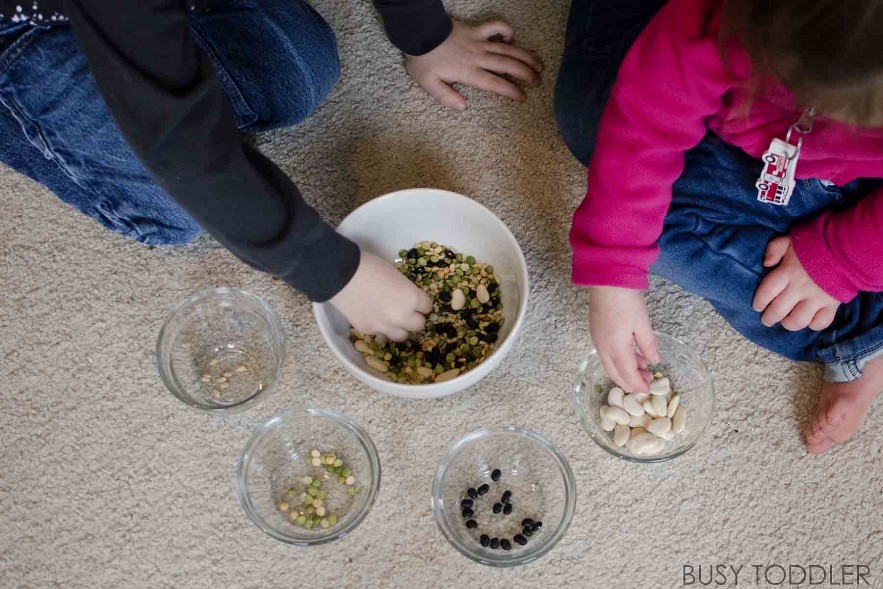 |
| Photo busy toddler |
Requires: a variety of dried beans - a bag of mixed beans can usually be found in the dried bean section of your grocery store; various small containers - we used empty mini playdough cans and plastic measuring cups. Any type of container will do; just make sure it is the right size for the work area. If you don't have any containers, just sort into piles on the table.
How to play:
Show your child how to place different types of beans in different containers. Show them how to look for matches based on type or color. Then hand it over to your child. Discuss counting or different sizes. As your child works with the various items, they will discover new ways to sort.
As your child becomes more comfortable with this type of activity, you can vary the items used. We added dried noodles here.
The kids think it's pretty cool that they can play games with food, and you'll appreciate the new low-cost entertainment.
What kids learn: Sorting beans seem easy to adults but kids can learn a lot from sorting. By sorting and categorizing beans, your kindergartner will begin to build math and problem-solving skills.
11. I Spy
How to play: I Spy and its variations are wonderful sensory games and activities for young children to learn about their surroundings. For a child who has never played before, pick out a secret object in plain sight and say, "I Spy something blue," and see if the child can correctly guess it. If there are several kids, they can take turns looking around and guessing.
Variations: "I spy something that is a circle," for example. What you are spying (smaller or less obvious things) and how you describe what is spied can easily change the difficulty (bumpy or soft things, for example).
12. Hot Potato
How to play: This indoor game can get a little giggly, so be warned! It is great though, because it is one of those games to play with kindergarten kids up through older grades. Grab any soft ball or rolled up socks and underhand-toss it to a child. Instruct them to toss it to someone else as quickly as possible. Each child repeats this. When does this game end? Who knows? Just get rid of it!
| If there are enough kids for this indoor activity, play short segments of music while they toss the object, then stop the music, and the last child to touch it when the music stops is out. Repeat until only one child remains. |
13. Musical Chairs
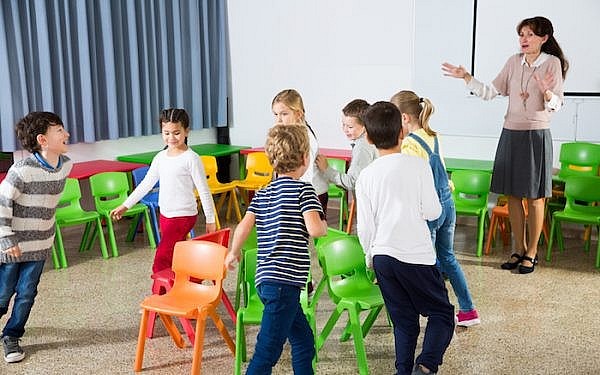 |
| Photo party games for kids |
Get your dancin’ shoes on! This game is best with at least 4 or more children playing and 1 additional person to stop the music. This is probably the most popular of the children’s group games for inside.
| Variations: If you don’t have enough chairs, try substituting pieces of colored construction paper taped to the ground. When the music stops, the child who gets both feet on first claims the spot. |
14. Row Your Boat
What kids learn: Self-awareness is a critical skill for children to acquire as part of the learning process. That is one of the reasons we ask Whitby students to assess their own learning. This can begin with physical self-awareness in young children.
Knowing how to moderate one's body is a very useful skill that prepares kids for later life.
How to play:
The rules are simple: pair children up facing each other, knees bent in front of them, and holding hands. Instruct them to rock back and forth to the music of "Row, Row, Row Your Boat." They'll need to collaborate and stay aware of their own movements at all times. It's best to play this game with a CD or a YouTube song so you can incorporate a "freeze" element by abruptly stopping the music. This teaches children to pay attention to auditory cues and match their physical movements to them.
15. Red Light, Green Light
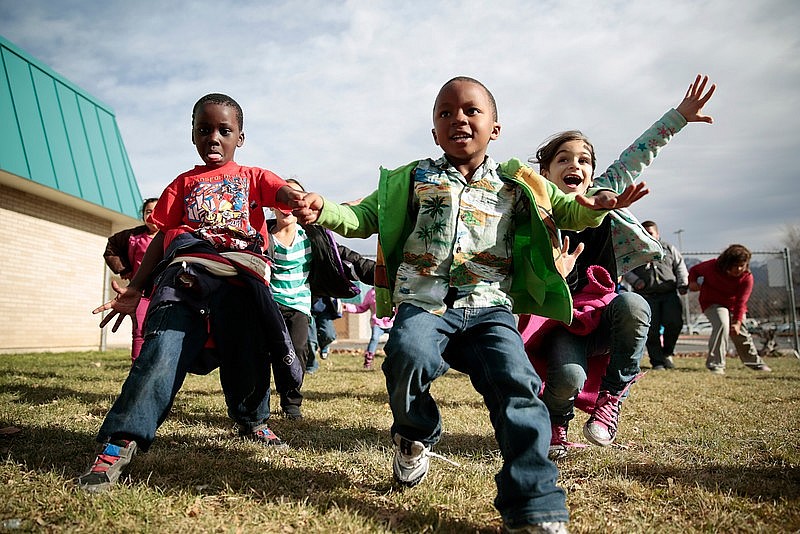 |
| Photo playworks |
Red Light, Green Light is an excellent game for teaching patience. After all, children dislike standing still. To play, one child stands on the opposite side of the field, facing away.
The goal is to be the first person to touch that person without moving. When the person is facing away, it is a green light for children to approach them. When the leader turns to face the group, it's a red light, and the children must stop moving.
Anyone caught in motion by the leader must return to the starting line. To win at Red Light, Green Light, kids must control their urge to run forward, instead choosing a pace that allows them to stop instantly if the leader starts.
16. Jump The Line
This is an excellent way to go over the day's or week's lessons. Place a piece of painter's tape on the floor and have your children line up on it. Make one side true and the other false. Give them information they should know and let them choose whether to jump to the true or false side. If they make the wrong decision, they're out. (For instance, "two plus two equals five.") Anyone who chose the "true" side will be eliminated.)
17. Treasure Hunt
Hide small toys around the house, and then send your child on a treasure hunt to find them all. You can make it more challenging by adding clues or riddles to the treasure hunt, so your child has to see where each item is hidden.
18. Hide and Seek
How to play:
Count while your kids are hiding. Go find them once you've reached a certain number. After that, switch positions.
What kids learn:
This game teaches your children to count. It also is a great way to teach them to take turns and be patient while someone is finding them.
19. Duck, Duck, Goose
How to play:
Play the role of the person who goes around the circle in turns. Tap each head and say either duck or goose. When you say goose, someone has to run after you and tag you. You become the tagger if you sit in their spot before they tag you.
What kids learn: This teaches children to listen to what is being said and makes them more socially comfortable.
20. Parachute Games
Playing with a parachute is an enjoyable way for children to learn teamwork. Kids form a circle and hold a parachute (or large sheet) between them. When a ball or other object is placed on the parachute, the children toss it up and down. The ball will fall off the side of the parachute if the kids do not move in unison.
When using a large parachute, children must work together to keep multiple balls in play at the same time, or they must learn how to throw the parachute up so that one child can run underneath before it falls.
Conclusion
If you're like most parents, you want to know that your child is always in the best possible learning environment. What's the good news?
Many preschool games that appear to be just for fun actually teach life skills. So, while it may appear that your children are simply having fun with their friends, they are actually learning skills that will help them succeed later in life.
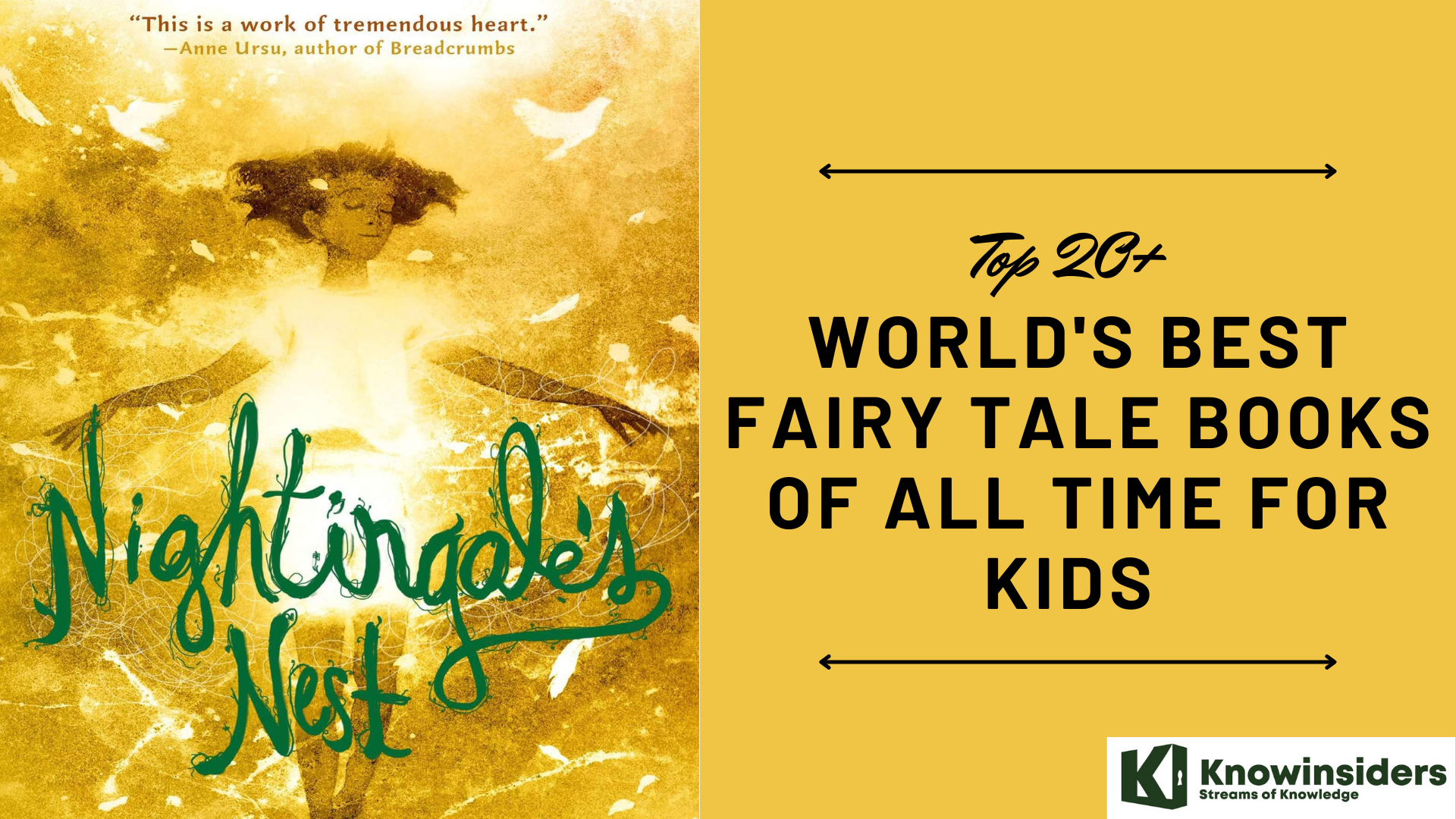 Top 20 Best Fairy Tale Books for Kids Of All Time Top 20 Best Fairy Tale Books for Kids Of All Time Children can learn important lessons from fairy tales in these engaging novels that are also brimming with enchantment and amazing moments. See the list of ... |
 Top 30 Most Popular Fables and Lesson You Should Read For Kids Top 30 Most Popular Fables and Lesson You Should Read For Kids If your kids are not fond of long, complicated stories, fables are perfect for some bedtime tales, and important morals that they can learn from ... |
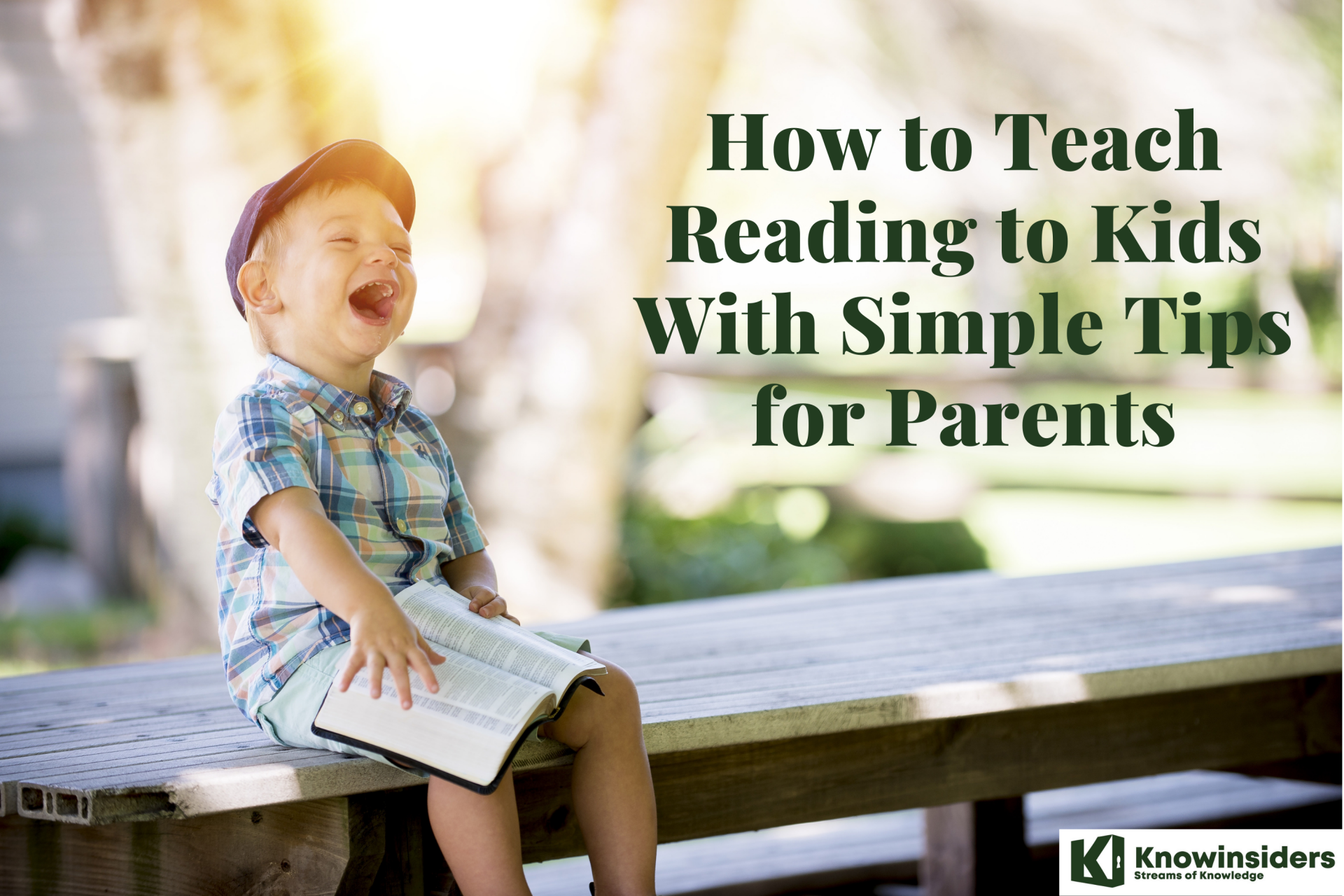 How to Teach Reading for Kids at Home with Simple Tips How to Teach Reading for Kids at Home with Simple Tips With the abundance of information out there, it can seem like there is no clear answer about how to teach a child to read. Here ... |
 Top 9 Billionaires Have The Most Kids In The US Top 9 Billionaires Have The Most Kids In The US Which billionaires have the most children? Elon Musk doesn't the no.1. Check the list in this article now! |


